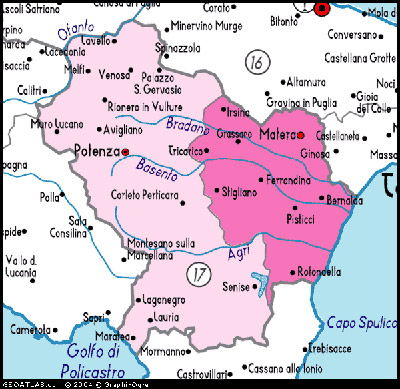
Basajo would be a compelling cheese even if it didn't have such an engaging backstory. But the history behind this luscious wine-soaked blue adds to its allure, and its compatibility with silky dessert wines makes an even stronger case for a holiday splurge. Janet Fletcher wrote this great article in 2009.

Basilicata is a region of Italy which occupies the arch of the foot, comprising the provinces of Potenza and Matera. The ancient name was Lucania. The western side is rugged and mountainous and the terrain has caused the region to remain impoverished. Here wild hare and fowl are hunted. Cereals, olives and vines are cultivated and it is well known for its pork products, though meat is uncommon, chillis, particularly the very hot diavolicchio, and sharp cheeses from sheeps' milk. This sparsely populated region was overrun by conquerors from the East who brought with them the foods they enjoyed, such as cinnamon and cloves and almonds. Many vegetable stews are cooked here, including ciambotta, broad beans (US: fava beans), chickpeas (US: garbanzo beans) and lentils, and very slow cooked stews using poor cuts of meat, rendering them delicious. Mint is commonly used in the cuisine of Basilicata. Fish, naturally, is found in plenty in the coastal regions.
"Red basil." I suspect that this is purple basil, a variety of basil with reddish-purple leaves, narrow in shape, used in beef and fish dishes. Red basil sometimes refers to a type or perilla, but I don’t think this is perilla.
A type of small salami about 13 cm (5 inches) from Lombardy made with pork and the beef trimmings from bresaola. It is usually cut into chunks rather than slices.